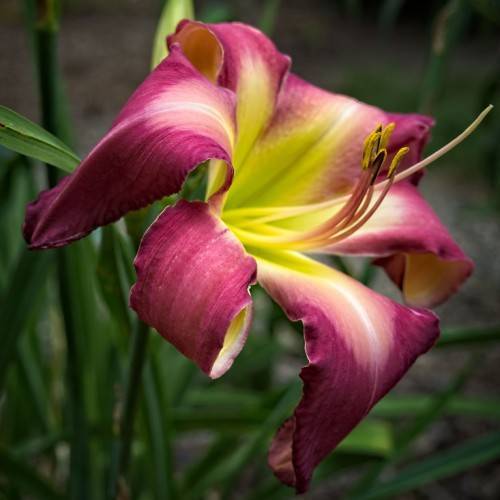
tetraploid daylily
Hemerocallis 'Evening Enchantment'
Cycle:
Herbaceous Perennial
Watering:
Average
Hardiness Zone:
3 - 9
Flowers:
Flowers
Sun:
Full sun,part shade
Leaf:
Yes
Growth Rate:
High
Maintenance:
Low
Care Level:
Medium
watering
Tetraploid daylilies (Hemerocallis 'Evening Enchantment') should be watered during dry periods as needed. In general, the soil should be kept slightly damp and never allowed to dry out completely. To do this, water the daylilies every 3-5 days, or when the top 1-2 inches (2.5-5 centimeters) of the soil feels dry. If there has been no rain for several days, increase watering to every other day or on a daily basis as needed. Always water in the morning, so that any excess water will evaporate in time for midday sun.
sunlight
Tetraploid daylily (Hemerocallis 'Evening Enchantment') thrives in full sun, meaning it should receive at least 6 hours of direct sunlight each day. In areas with moderate summers and mild winters, these plants should be given full sun throughout the day. However, in hotter climates the plant should receive morning sun and be sheltered from the afternoon or afternoon sun. It’s important to be mindful of the sun’s intensity during the middle of the day and partially shade the plant from 12 PM - 3 PM. To ensure your tetraploid daylily is successfully blooming, make sure it gets at least 6 hours of sunlight each day.
pruning
Tetraploid daylilies should be pruned lightly each year when they are dormant, from late fall through early spring. Pruning should be done slowly and deliberately, beginning with thinning the center of the plant, or removing dead or discolored foliage. After the center has been thinned, you should then trim away any excess foliage around the outer edge of the plant. Pruned flowers should be removed at this time as well. Pruning at the wrong time, or over pruning, can cause damage to the plant.
